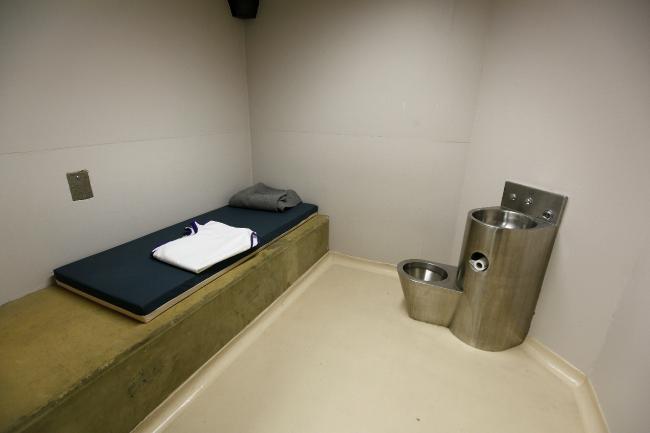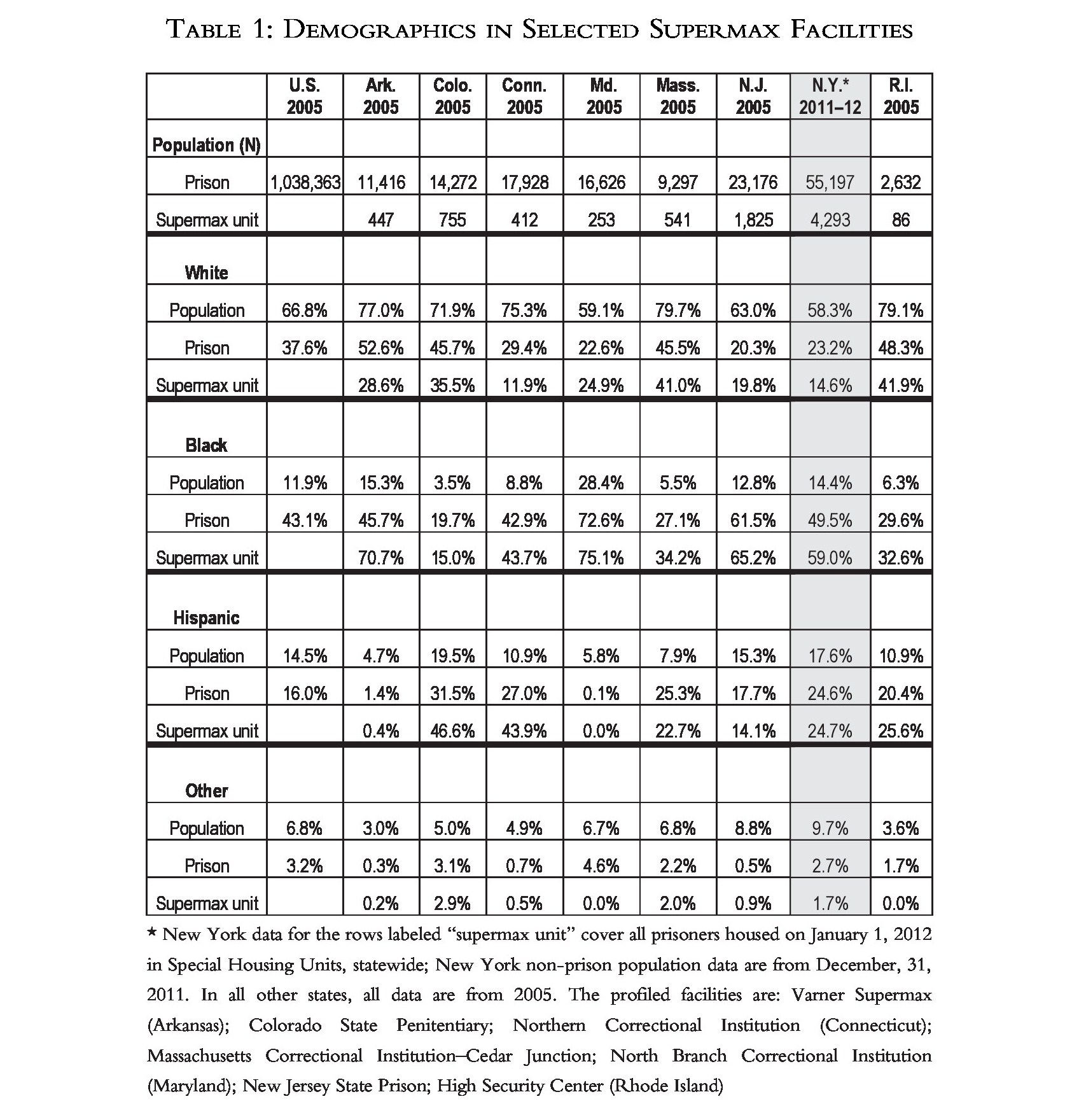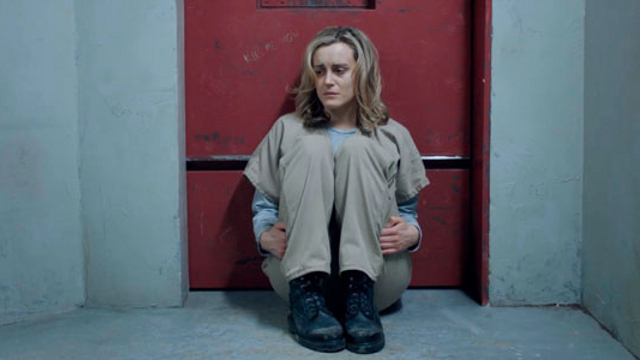There may be as many as 80,000 American prisoners currently locked-up in a SHU, or segregated housing unit. In 2014, NSW, NT and WA corrective services could not give a figure for how many people are in solitary confinement as it is constantly fluctuating. Solitary confinement can cause irreversible psychological effects in as little as 15 days. Here’s what social isolation does to your brain, and why it should be considered torture.
Top image: Orange is the New Black
There’s no universal definition for solitary confinement, but the United Nations describes it as any regime where an inmate is held in isolation from others, except guards, for at least 22 hours a day. Some jurisdictions allow prisoners out of their cells for one hour of solitary exercise each day. But meaningful contact with others is typically reduced to a bare minimum. Prisoners are also intentionally deprived of stimulus; available stimuli and the fleetingly rare social contacts are rarely chosen by the prisoners, and are are typically monotonous and inconsiderate of their needs.
As for the gaol cell itself, it typically measures 2 x 3m. Nearly all scenarios for human contact, such as a guard or medical and family visits, are done through a metal mesh, behind glass partitions or in hand- and leg-cuffs.

A cell inside Goulburn Supermax prison in Australia. (Duderocket)
Writing in Wired, Brandon Keim describes the conditions in the cells:
What’s emerged from the reports and testimonies reads like a mix of medieval cruelty and sci-fi dystopia. For 23 hours or more per day, in what’s euphemistically called “administrative segregation” or “special housing,” prisoners are kept in bathroom-sized cells, under fluorescent lights that never shut off. Video surveillance is constant. Social contact is restricted to rare glimpses of other prisoners, encounters with guards, and brief video conferences with friends or family.
For stimulation, prisoners might have a few books; often they don’t have television, or even a radio. In 2011, another hunger strike among California’s prisoners secured such amenities as wool hats in cold weather and wall calendars. The enforced solitude can last for years, even decades.
These horrors are best understood by listening to people who’ve endured them. As one Florida teenager described in a report on solitary confinement in juvenile prisoners, “The only thing left to do is go crazy.”
Prisoners in low and medium security gaols are often thrown in the SHU for “just” a few days. But in maximum security prisons, individuals in solitary are held on average for five years, and there are thousands of cases of prisoners who have been held in solitary confinement for decades. Some countries, such as the United States, employ the use of Super Maximum Security Prisons, or “Supermax Prisons”, in which solitary confinement is framed as a normal, rather than exceptional, practice for inmates.

Pelican Bay State Prison in California. The X-shaped structure is the supermax security housing unit. Credit: CDCR.
Exact statistics are not known, but a 2011 study suggested that 20,000 to 25,000 prisoners in the United States are held in this way. Keim claims that that California holds some 4,500 inmates in solitary confinement, and that there are as many as 80,000 prisoners held in solitary across the United States — more than any other democratic nation.
Lasting Effects
Human beings are social creatures. Without the benefit of another person to “bounce off of”, the mind decays; without anything to do, the brain atrophies; and without the ability to see off in the distance, vision fades. Isolation and loss of control breeds anger, anxiety and hopelessness.
Indeed, psychologist Terry Kupers says that solitary confinement “destroys people as human beings”. A quick glance at literature review studies done by Sharon Shalev (2008) and Peter Scharff Smith (2006) affirms this assertion; here are some typical symptoms:
- Anxiety: Persistent low level of stress, irritability or anxiousness, fear of impending death, panic attacks
- Depression: Emotional flatness/blunting and the loss of ability to have any “feelings”, mood swings, hopelessness, social withdrawal, loss of initiation of activity or ideas, apathy, lethargy, major depression
- Anger: Irritability and hostility, poor impulse control, outbursts of physical and verbal violence against others, self, and objects, unprovoked angers, sometimes manifested as rage
- Cognitive disturbances: Short attention span, poor concentration and memory, confused thought processes, disorientation
- Perceptual distortions: Hypersensitivity to noises and smells, distortions of sensation (for example walls closing in), disorientation in time and space, depersonalisation/derealisation, hallucinations affecting all five senses (e.g. hallucinations of objects or people appearing in the cell, or hearing voices when no one is speaking
- Paranoia and psychosis: Recurrent and persistent thoughts, often of a violent and vengeful character (for example directed against prison staff), paranoid ideas (often persecutory), psychotic episodes or states, psychotic depression, schizophrenia
- Self-harm: self-mutilation and cutting, suicide attempts
In California, it has been shown that inmates are 33 times more likely to commit suicide than other prisoners incarcerated elsewhere in the state. Disturbingly, solitary confinement beyond 15 days leads directly to severe and irreversible psychological harm. But for some, it can manifest in even less time. What’s more, a significant number of individuals will experience serious health problems regardless of specific conditions of time, place and pre-existing personal factors.
In terms of prevalence, somewhere between 8 per cent and 19 per cent of American prisoners will experience significant psychiatric or functional disabilities, while another 15 per cent to 20 per cent will require some form of psychiatric intervention during their incarceration. Figures in Europe are comparable, and we can expect the same in Australia. The American Psychiatric Association says that up to 20 per cent of all prisoners are “seriously mentally ill” whereas up to 5 per cent are “actively psychotic at any given moment”. About 4 per cent of inmates have schizophrenia or some other psychotic disorder, nearly 19 per cent suffer from depression, and around 4 per cent have bipolar disorder (Abramsky and Fellner 2003).
Once Considered Rehabilitative
Ironically, solitary confinement began with the best of intentions.

It emerged in the United States during the 1820s when it was believed that isolating prisoners would be rehabilitative. They thought that prisoners would spend their entire day alone, mostly within the confines of their cells, ruminating about their crimes while distanced from negative external influences. European and South American countries eventually adopted the practice. At the time, solitary confinement was perceived as a socially and morally progressive way to deal with punishment — and a viable alternative to the death penalty. (image: Eastern State Penitentiary, Library of Congress)
Here’s a timeline of solitary confinement in US prisons.
Today, people are put into the SHU for breaking prison rules, or for “administrative reasons” such as interrupting gang communications, protecting other prisoners or to separate the prisoner from others who would threaten them.
Many prison officials claim that solitary confinement is used sparingly and reserved for “the worst of the worst”, but the advocacy group Architects, Designers, Planners for Social Responsibility say that
This is simply not true. Many if not most people in solitary confinement suffered from mental illness prior to their placement in solitary; responding to their disruptive behaviour is not only a failure of the prison mental health systems to provide minimally required care, but also exacerbates their conditions and typically leads to even worse problems.
Sadly, and despite the US Supreme Court ruling that placing mentally ill individuals in solitary confinement is a constitutional violation, the practice is still widespread; most mentally ill prisoners cannot seek recourse. Weirdly, the Supreme Court has not refused to rule it unconstitutional to keep someone in solitary who has become mentally ill because of the experience.

What’s more, solitary confinement is also a racial issue. A 2005 BJS prison census showed that non-white prisoners are substantially overrepresented in supermax facilities. As Margo Schlanger writes in Solitary Watch, “American jails and prisons are themselves vastly racially skewed in their populations, and what we are likely to find is an even more extreme skew for those who are on the receiving end of isolated confinement’s harsh effects.” This racial inequality is also seen in the Australian system, with one in six black people going to gaol. Though the Aboriginal people comprise of only three per cent of Australia’s population, they make up more than 28 per cent of the prisoner population.
This investigative report, “Boxed In: The True Cost of Extreme Isolation in New York’s Prisons,” was put together by the New York Civil Liberties Union (more here).
Putting An End to It
Solitary confinement fails as a rehabilitative measure, and as a way to “settle down” problematic prisoners. The practice actually backfires, causing prisoners to lose their ability to control their anger, which can result in a longer stint in solitary. And as the devastating laundry list of psychological disorders can attest, it needs to be called out for what it is: torture.
The United Nations agrees. Back in 2011 it issued a report claiming that long-term solitary isolation is a form of torture — a cruel, inhuman, and degrading treatment prohibited by international law. The report made special reference to the United States’ use of supermax prisons as a violation.
“Segregation, isolation, separation, cellular, lockdown, Supermax, the hole, Secure Housing Unit… whatever the name, solitary confinement should be banned by States as a punishment or extortion technique,” noted the UN’s Juan E. Méndez. “Social isolation is one of the harmful elements of solitary confinement and its main objective. It reduces meaningful social contact to an absolute minimum.”
In the US, a number of groups are now railing against the practice, including the New York Civil Liberties Union, the Center for Constitutional Rights, and Human Rights Watch. Two years ago, the US Senate held its first-ever hearings on solitary confinement, concluding that the practice is ineffective and a costly human-rights violation. In fact, it’s the most expensive form of incarceration, costing up to three times as much as general prisoner population housing.
And as Alexis Agathocleous from the Center for Constitutional Rights has aptly noted:
We know that keeping someone in solitary confinement puts them at very serious risk of descending into irreversible mental illness. That’s not tolerable in a society that values the dignity and humanity of all people, no matter whether they are incarcerated or not.
[Sources: Wired [99% Invisible [ADPSR [United Nations (2)]

Comments
6 responses to “Why Solitary Confinement Is The Worst Kind Of Psychological Torture”
it’s almost like there’s a consequence to being a douchebag or something. prison is not a holiday. if you don’t want in agseg, don’t be a douche. the only opposition i have to agseg is that it’s used for protection of prisoners whose lives are threatened also. they can end up in there for years sometimes because the threat to their lives are so great.
I think the problem isn’t just that it’s cruel, it’s that it’s self defeating. Incidentally, there’s a lot evidence to suggest that a good chunk of regularly visitors to solitary are only disruptive because they need mental health services, not prison.
But even there, they got themselves put in gaol in the first place so it is difficult to have too much sympathy for them, either.
In fact, it is quite disingenuous to write an article like this without acknowledging the circumstances under which people might find themselves in prison in the first place. It’s not meant to be pleasant, it’s punishment. Surely nobody believes in rehabilitation in this day and age?
It doent matter what someone has done to go in prison. You get sentence in a court of justice to pay for what you did, not for some ass that has been given a badge to hurt you. Thats not part of anyones sentence. What these prison guards to to them is inhumane. Do you know what that means? That we must put our human sentiment before the law. If you daughter or son was locked up, regardless of what he/ may have done do you think ita right for a officer to spit in their food, and torture them and otherthings that happen in seg? Do you think you could watch you child be abused by on e of these prison guards? If your answer is yes, than you should be given a life sentence so that you can experienc3 it too.
As someone with experience in this area, separate confinement is used because an inmate presents an unacceptable risk to themselves and those around them. A more controlled environment reduces those risks while prison management works to find a way to better manage the inmate.
There are times when I think it would be dream